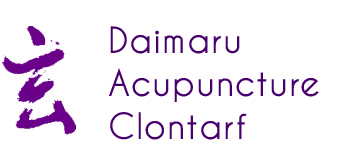February 10th, 2015 | Posted in 2 Pain, Injuries, Sports
BACK PAIN Research: Can acupuncture help?
- Low back pain means pain in the lower lumbar, lumbosacral, or sacroiliac regions possibly accompanied by pain radiating down one or both buttocks and legs. Low back pain is one of the most common complaints. It is present in at least 50% of all persons 60 years of age or older. It accounts for millions of hours lost from work and more millions of dollars spent on treatment and medication. Low back pain may be either acute or chronic. It can be simply annoying or irritating or it can produce unbearable physical and emotional suffering. In Western medicine, acute low back pain is treated with rest, local heat, massage, oral analgesics, and muscle relaxants.
- Chronic low back pain is treated by weight loss, exercise, orally administered and intramuscularly injected analgesics, and surgery. However, long-term narcotic use has its own problems, and surgery is not alway seffective. On the other hand, Chinese have been treating low back pain with acupuncture and Chinese medicine for more than 2,000 years, and, in the last 50 years, a large body of research has been developed showing that Chinese medicine can be an effective alternative to Western drugs and surgery.
- Recent Chinese research supports the use of acupuncture for low back pain
- Wang Wen-yuan et al., in Bei Jing Zhong Yi (Beijing Chinese Medicine), #1, 1993. Patients received acupuncture once per day for a total of 10 treatments. Of the total 5,461 cases so treated, 76.10% were cured and the total improvement rate was 97.20%
- Acute lumbar sprain
- Shu Hong-wen, in Shang Hai Zhen Jiu Za Zhi (Shanghai Journal of Acupuncture & Moxibustion), #3, 1994, reported on the treatment of 129 cases of acute lumbar sprain by needling a single point. (Shou Gou Gv26)
The members of a control group were treated with another acupuncture protocol using several points. In the single point group, there were 114 cures for a cure rate of 88%. The other 15 cases all showed marked improvement. Of those cured with this one point protocol, 73 were cured in one treatment, 33 in two treatments, and eight in three treatments. Among those receiving the alternative acupuncture treatment, 18 or 60% were cured, five cases or 17% showed marked improvement, and seven cases or 23% showed fair improvement. In other words, the back conditions were corrected or improved after receiving acupuncture for all patients in both groups.
Degenerative disc disease
- As for degenerative disc disease, Guo Jian-hua, in Jiang Su Zhong Yi (Jiangsu Chinese Medicine), #4, 1994, reported that in treating 78 cases with prolapsed intervertebral discs with a combination of acupuncture, massage, heat lamps, and acupressure, 56 cases or 72% cases were cured, 15 cases or 19.2% were markedly improved, five cases or 6% showed fair improvement, and only two cases or 2.8% got no result. This is a total amelioration rate of 97.2%
- Lumbar disc protrusion
Wu Shi-qian, in Tian Jin Zhong Yi (Tianjin Chinese Medicine), #4, 1994, reported on 50 cases of lumbar disc protrusion treated with acupuncture. Of these 50 patients, 30 were men and 20 were women. Their ages ranged from 30-60 years. They received acupuncture at 4-6 points per treatment, and one treatment every day for 10 days equaled one course of treatment. Typically, patients received three full courses of treatment. Of these 50 cases, 40 cases or 80% were cured, eight experienced marked improvement, and two got no result. Thus the total amelioration rate in this study was 96%.These studies show that treatment by qualified and experienced acupuncturists can relieve both acute and chronic low back pain. Western researchers may quibble that these studies were not double-blind, placebo controlled studies, but that kind of study cannot be done with acupuncture. These studies are based on the real-life treatment of real live low back pain patients of all ages and both sexes. In all these studies, 60% had their condition totally corrected and the total amelioration rate was above 95%.
- A billion Chinese can’t be wrong.


